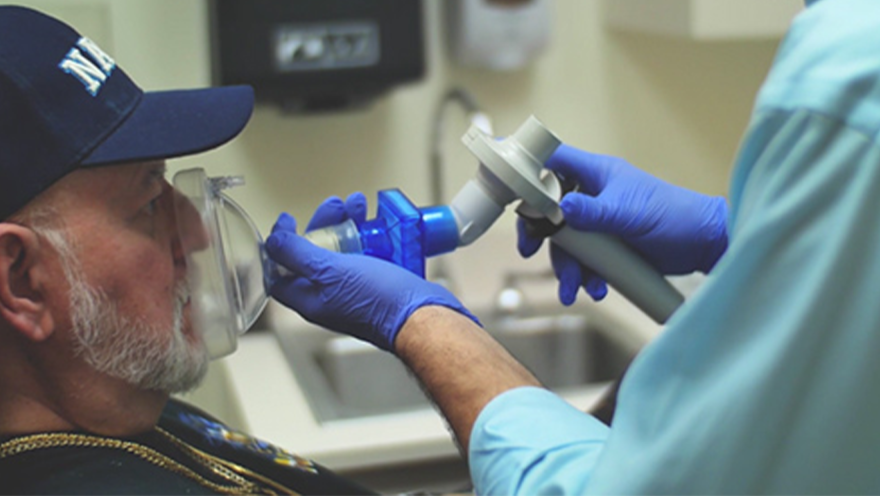The impact of ALS on breathing is likely one of the most daunting aspects of the disease journey and one for which you and your family can and should prepare for early on. There are many different options and interventions to consider, and education and proactive planning can help to ease the stress for everyone involved.
Ken Menkhaus, Ph.D., is a husband, a father, a professor of political science and member of The ALS Association national Board of Trustees. Ken was diagnosed with ALS in 2018 and like most everyone confronting an ALS diagnosis, Ken had questions about the ALS journey he is facing.
Understanding the fears and frustrations that all people diagnosed with ALS encounter, Ken allowed The ALS Association to bring cameras along on his own fact-finding journey to understand more about the impact of ALS on respiratory health and the kinds of decisions he and his family will face as the disease progresses.
Ken spent time documenting his conversations with physicians, health care providers and families living with ALS to help others make informed decisions about breathing support through their own ALS experience.
In one conversation, Dr. Lou Libby, Pulmonologist at The Providence ALS Center at the Oregon Clinic and member of The ALS Association national Board of Trustees, discussed the muscles we use to breathe, and the importance of having a care plan and a pulmonologist on the care team. “It really varies from person to person, but in general, if you live long enough with the disease, all breathing muscles are going to be affected,” he said. The pulmonologist helps patients make decisions about the right timing for interventions with various ventilation options they have to maintain their best quality of life. “All plans are flexible,” says Dr. Libby. “Nothing is written in stone. Anything we decide today can be changed later.”
Additional conversations with other clinicians and health care professionals help to explain how the entire multidisciplinary team works together to address breathing changes and how energy conservation can impact breathing while offering strategies to help maximize respiratory function throughout the day. The role of good nutrition and a healthy diet related to respiratory function is discussed as well as the various interventions available to help with respiratory challenges as ALS progresses.
In a final conversation, Donnie Graham, a person living with ALS, and his wife, Jan Steinbock, share their advice for planning and caregiving related to respiratory issues. Donnie says, “You really need to be willing to embrace the technology that you have, that’s offered to you. You need to not really fight it but see how you can work with it to make it work for you.”
Jan described the many ways people living with ALS and their families can be proactive about planning ahead to help keep everyone safe and informed. For example, Jan and Donnie have contacted their local fire department and EMT’s so if they need the assistance of 9-1-1, they know exactly how to treat him and where to take him so he gets the proper care he needs. They keep their friends and family trained and up to date on the respiratory equipment Donnie requires so they maintain the support they need.
But Donnie says there’s a lot more to it. “It’s beyond just having the support, it’s really a lot of things,” he said. “It’s the clinic and the support you get from the clinic and the doctors. It’s the therapy, you know. It’s the attitude. All of that plays together in being able to manage these things.”
While these videos have been developed and produced to introduce and educate people about the complicated topic of breathing changes in ALS, we strongly encourage you to follow up with your local chapter and clinic team for more information.
Special thanks to Ken Menkaus and the many others who participated in creating this invaluable set of resources for people living with ALS and their families.
To view the entire set of video conversations addressing respiratory changes in ALS, visit our website HERE. To continue to follow stories about people living with ALS in the community and learn more about the disease, follow our blog HERE.


Join the conversation. Please comment below.